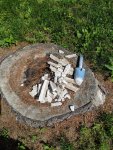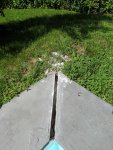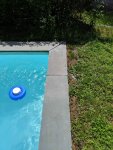After opening my pool I noticed some very strange stains. Last year the cracks in between the stones around the pool was repaired, but I noticed the cement had turned soft and I suspect was leaking into the pool. I believe the cement was the cause of the staining. I posted another thread about this. Jack's magic tested positive for Copper And Scale. SInce it is not copper I assumed it is scale. I used the stain treatment and it worked. However, the stain is reappearing now. It may just be a resettling or maybe the cement is continuing to leak into the pool. I'm not sure but I suspect the latter. I've removed the cement now, so hopefully further staining will not occur.
If the cement is in the pool, could be possible be dangerous to swim? Is there a way to tell? Unfortunately, I do not know what cement was used and I have no way to tell. I do have the cement pieces but not the original container. Whatever was used was not good because it did not dry properly.
Should I be concerned?
If the cement is in the pool, could be possible be dangerous to swim? Is there a way to tell? Unfortunately, I do not know what cement was used and I have no way to tell. I do have the cement pieces but not the original container. Whatever was used was not good because it did not dry properly.
Should I be concerned?




